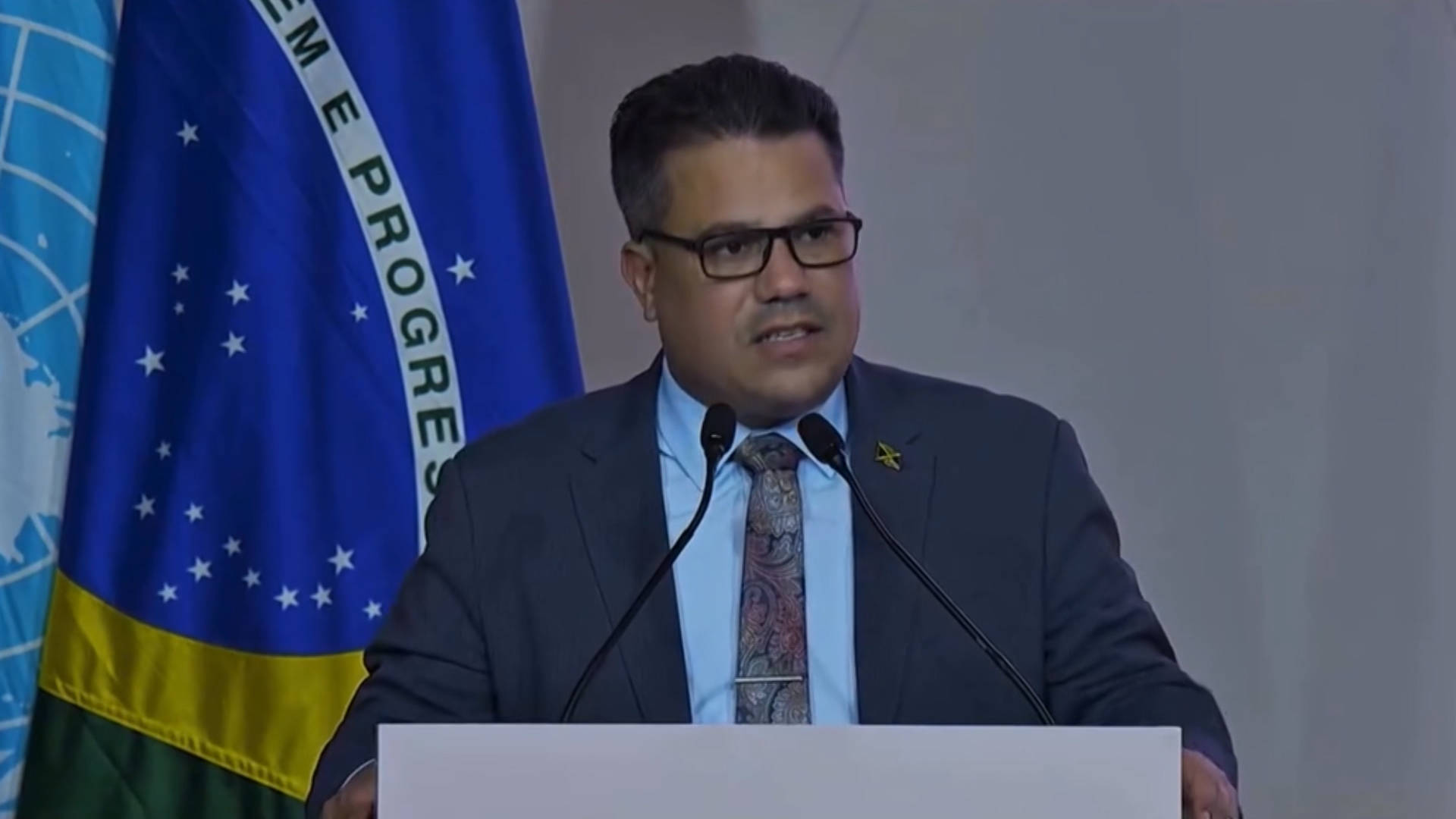Saudi Arabia warned over human rights abuses migrant workers face on Riyadh Metro Project – Jurist.org

Report on Labor Abuses in Riyadh Metro Project and Implications for Sustainable Development Goals
Introduction
A report issued by Amnesty International details significant human rights abuses against migrant workers involved in the construction of the Riyadh Metro Project. While the project itself aligns with Sustainable Development Goal 11 (Sustainable Cities and Communities) by aiming to improve public transit, the findings indicate that its implementation has severely contravened international law and undermined several other SDGs, most notably SDG 8 (Decent Work and Economic Growth).
Key Findings and Contradictions with SDG 8: Decent Work and Economic Growth
The investigation, which included interviews with 38 migrant workers, revealed systemic violations of labor rights that directly conflict with the principles of decent work.
- Forced Labour and Debt Bondage (Target 8.7): Workers were compelled to pay excessive recruitment fees, averaging between USD 700 and USD 2,700. This practice, which violates Saudi law and exceeds caps set by origin countries, forced many into debt bondage, a form of modern slavery that SDG 8.7 seeks to eradicate.
- Unsafe Working Environments (Target 8.8): The report documents exposure to dangerous heat conditions leading to workers collapsing on site. This occurs despite Saudi laws restricting work during peak heat hours, indicating a failure in enforcement and a direct violation of the right to a safe and secure working environment for all workers, especially vulnerable migrant laborers. This also negatively impacts SDG 3 (Good Health and Well-being).
- Inadequate Wages and Poverty (Target 8.5 & SDG 1): Some workers earned less than $2 per hour, a wage that fails to ensure a decent standard of living as called for by the International Covenant on Economic, Social, and Cultural Rights. These low wages, which forced individuals to work over 60 hours per week, are in direct opposition to SDG 8’s goal of fair wages and SDG 1’s aim to end poverty in all its forms.
- Poor Living Conditions: Additional abuses were reported concerning the quality of food and sanitation, further compromising workers’ health and well-being (SDG 3).
Broader SDG Implications
- SDG 10 (Reduced Inequalities): The exploitation of migrant workers from countries like India and Nepal highlights profound inequalities and the vulnerability of this demographic within the global labor market.
- SDG 11 (Sustainable Cities and Communities): The report presents a critical paradox where a project designed to create sustainable urban infrastructure (Target 11.2) is constructed through socially unsustainable and exploitative practices.
- SDG 16 (Peace, Justice and Strong Institutions): The negligible penalties and lack of enforcement of Saudi Arabia’s own labor laws demonstrate institutional weaknesses in protecting the rights of migrant workers and providing access to justice.
Recommendations for SDG Alignment
Amnesty International’s calls to action can be framed as necessary steps to align the project and national policies with the Sustainable Development Goals.
- The Government of Saudi Arabia: Must reform its migrant worker system to protect labor rights and ensure access to justice, thereby strengthening its commitment to SDG 8 and SDG 16.
- Companies Involved: Must implement comprehensive human rights due diligence processes across all operations to ensure their practices support, rather than undermine, SDG 8.
- Governments of Origin Countries: Must increase protections against exploitative recruitment practices to safeguard their citizens and contribute to the global achievement of SDG 8 and SDG 10.
Analysis of Sustainable Development Goals in the Article
1. Which SDGs are addressed or connected to the issues highlighted in the article?
-
SDG 8: Decent Work and Economic Growth
- The article’s core focus is on the violation of migrant workers’ rights, including low wages, excessive working hours, and unsafe working conditions, which are central themes of SDG 8.
-
SDG 10: Reduced Inequalities
- The report highlights the exploitation of a vulnerable group—migrant workers from countries like India and Nepal—exposing the inequalities they face compared to other workers and the failure to ensure safe and responsible migration.
-
SDG 16: Peace, Justice and Strong Institutions
- The article points to institutional failures, noting that Saudi laws designed to protect workers (e.g., prohibiting recruitment fees and restricting work in extreme heat) are not effectively enforced, indicating a lack of justice and weak rule of law for this group.
-
SDG 1: No Poverty
- The extremely low wages (“less than $2 per hour”) paid to the workers, despite them working long hours, trap them in a cycle of poverty and debt, directly contradicting the goal of eradicating poverty.
-
SDG 3: Good Health and Well-being
- The dangerous working conditions, specifically the “dangerous heat conditions where fellow workers would collapse on site due to heat exposure,” and poor sanitation directly threaten the health and well-being of the workers.
-
SDG 11: Sustainable Cities and Communities
- While the Riyadh Metro Project aims to create sustainable transport infrastructure (a key part of SDG 11), the article demonstrates that the construction process itself is unsustainable due to the severe human and labor rights abuses involved.
2. What specific targets under those SDGs can be identified based on the article’s content?
-
Target 8.5: Achieve full and productive employment and decent work for all… and equal pay for work of equal value.
- The article directly addresses this by highlighting the low wages, with some workers “earning less than $2 per hour,” which fails to meet the standard of “fair wages that ensure a decent standard of living.”
-
Target 8.7: Take immediate and effective measures to eradicate forced labour, end modern slavery and human trafficking…
- The practice of forcing workers to pay “excessive recruitment fees” ranging from “USD 700 to 2,700,” which forces them “to go into debt to get their jobs,” is a form of debt bondage, which is linked to forced labor.
-
Target 8.8: Protect labour rights and promote safe and secure working environments for all workers, including migrant workers…
- This target is relevant due to the “dangerous heat conditions where fellow workers would collapse on site” and the fact that workers were forced to work “more than 60 hours per week.” These conditions clearly violate the principle of a safe and secure working environment for migrant workers.
-
Target 10.7: Facilitate orderly, safe, regular and responsible migration and mobility of people…
- The recruitment abuses, including the excessive fees that violate both Saudi law and the laws of the workers’ origin countries, demonstrate a failure to facilitate safe and responsible migration for these workers.
-
Target 16.3: Promote the rule of law at the national and international levels and ensure equal access to justice for all.
- The article states that while Saudi laws exist to protect workers from heat exposure, “the enforcement penalties are negligible.” This lack of enforcement signifies a failure in the rule of law and denies workers access to justice for the abuses they face.
3. Are there any indicators mentioned or implied in the article that can be used to measure progress towards the identified targets?
-
Recruitment Fees Paid by Workers (Target 8.7)
- The article provides a specific monetary range: “These fees ranged on average from USD 700 to 2,700.” This quantifiable data serves as a direct indicator of exploitative recruitment practices.
-
Hourly Wage Rates (Target 8.5)
- The article mentions a specific wage level: “Some were earning less than $2 per hour.” This is a clear indicator for measuring whether workers receive fair wages.
-
Weekly Working Hours (Target 8.8)
- The report states that low wages forced some to “work more than 60 hours per week,” which serves as an indicator of excessive working hours.
-
Incidence of Health and Safety Violations (Target 8.8)
- The article provides a qualitative indicator of unsafe conditions by describing how “fellow workers would collapse on site due to heat exposure.” The frequency of such incidents could be a measurable indicator.
-
Effectiveness of Legal Enforcement (Target 16.3)
- The statement that “the enforcement penalties are negligible” for violations of heat safety laws is a qualitative indicator of the weakness of institutional mechanisms for protecting workers’ rights.
4. Table of SDGs, Targets, and Indicators
| SDGs | Targets | Indicators |
|---|---|---|
| SDG 8: Decent Work and Economic Growth | 8.5: Achieve decent work for all and equal pay for work of equal value. | Hourly wage rates (“less than $2 per hour”). |
| 8.7: Eradicate forced labour and end modern slavery. | Amount of recruitment fees paid by workers (“USD 700 to 2,700”). | |
| 8.8: Protect labour rights and promote safe and secure working environments for all workers. |
|
|
| SDG 10: Reduced Inequalities | 10.7: Facilitate orderly, safe, regular and responsible migration. | Prevalence of excessive recruitment fees charged to migrant workers. |
| SDG 16: Peace, Justice and Strong Institutions | 16.3: Promote the rule of law and ensure equal access to justice. | Effectiveness of legal enforcement (penalties for violating labor laws are “negligible”). |
Source: jurist.org
What is Your Reaction?
 Like
0
Like
0
 Dislike
0
Dislike
0
 Love
0
Love
0
 Funny
0
Funny
0
 Angry
0
Angry
0
 Sad
0
Sad
0
 Wow
0
Wow
0















































































